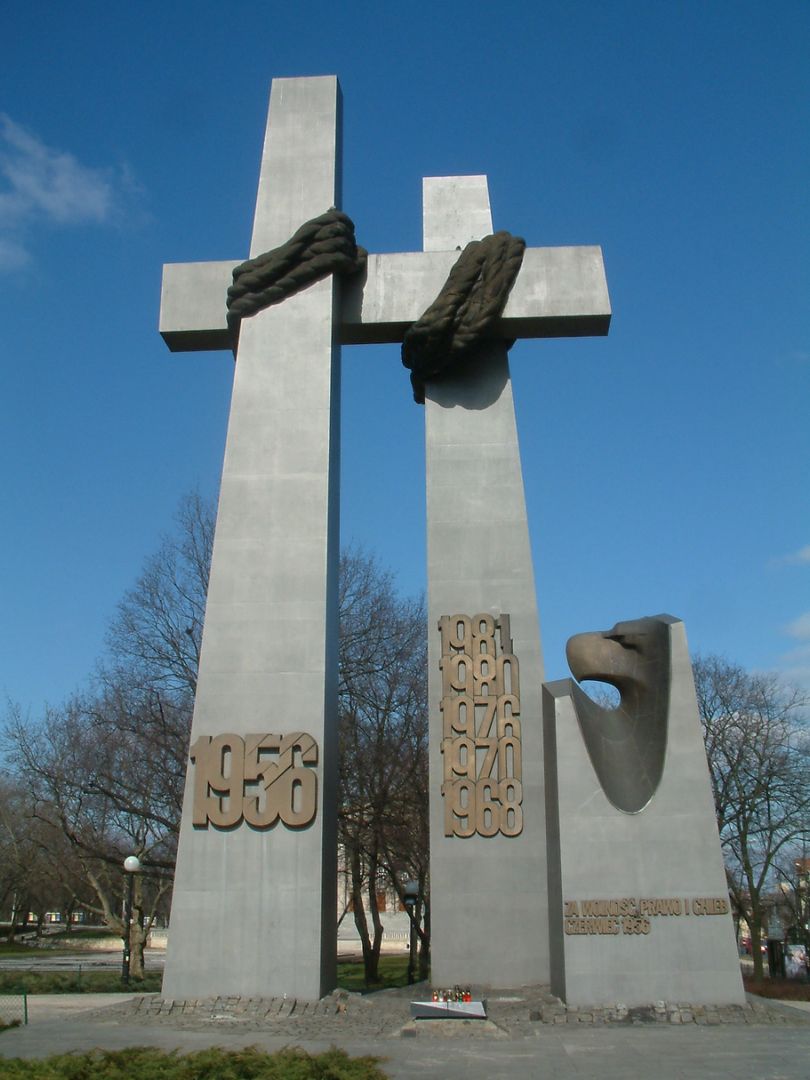Monument to the Victims of June 1956
6.78

Overview
The Monument to the Victims of June 1956, known as the Poznań Crosses, is located at Adam Mickiewicz Square in Poznań and commemorates the events of June 1956 and subsequent protests in the Polish People's Republic. The monument consists of two steel crosses – 19.5 and 21 meters tall – connected to each other, and a monument with an eagle's head. One cross bears the date 1956, while the other displays the years 1968, 1970, 1976, 1980, and 1981, symbolizing various uprisings against the communist regime. Nearby, the slogans of the workers are displayed, emphasizing the struggle for freedom and rights.
After August 1980, the Independent Self-Governing Trade Union "Solidarity" initiated the construction of the monument as one of its first projects. A construction committee, chaired by Roman Brandstaetter, began efforts to erect the monument by the 25th anniversary of the Poznań June. After numerous fundraisers and design competitions, the concept by Adam Graczyk and Włodzimierz Wojciechowski was selected. The monument was placed at the historic Adam Mickiewicz Square, where mass protests had taken place in 1956.
The construction faced many difficulties, including material shortages, which were overcome thanks to interventions by "Solidarity." The monument was finally unveiled on June 28, 1981, in the presence of approximately 200,000 people. The ceremony was rich in symbolism – attended by both church representatives and political leaders, who emphasized the significance of June '56 in the fight for democracy in Poland.
After the imposition of martial law in 1981, the monument became a symbol of resistance against the regime. Despite repression, annual demonstrations were held to commemorate the victims, and the monument itself was often the subject of symbolic acts, such as adding the date 1981. In subsequent years, the monument underwent renovations, and commemorative events continued to draw large crowds of Poznań residents, reflecting the enduring importance of June '56 in national memory.
The 50th anniversary in 2006 also garnered significant attention, attracting thousands of participants, including bishops and politicians, underscoring the monument's lasting place in Polish history. The Monument to the Victims of June 1956 is not only a testament to the past but also a symbol of independence and the struggle for freedom, reflecting the long history of social protests in Poland.
Location
Tickets
Powered by GetYourGuide
2025 Wizytor | All Rights Reserved